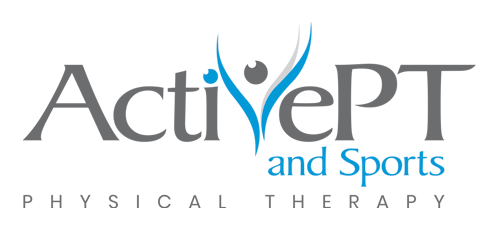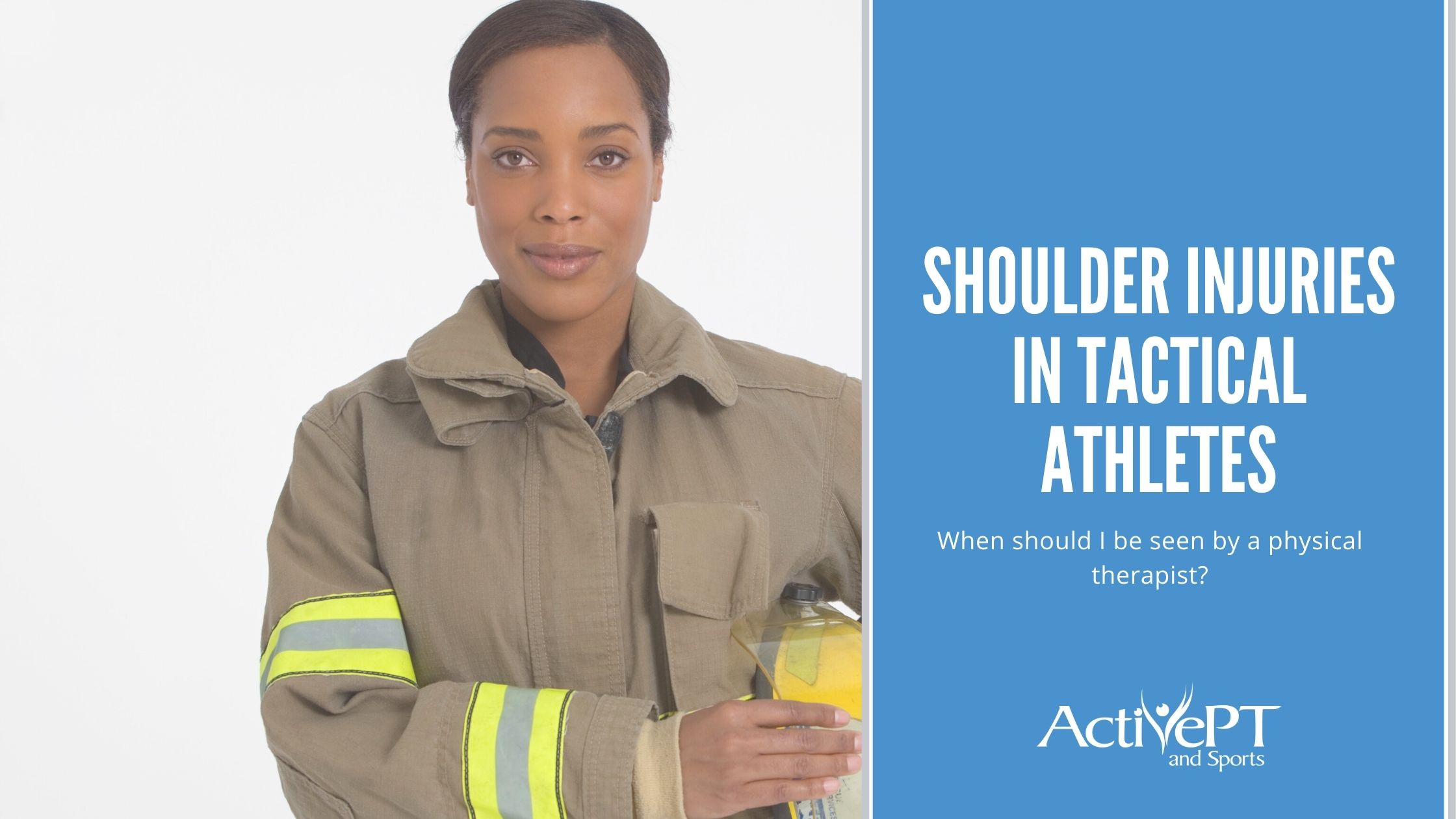By Sam Fischer, DPT & Brandon Voth, DPT
If you are a tactical athlete, you understand the wear and tear your job places on your shoulders. As the years go by, firefighters, police officers, EMS, and military personnel often begin to feel effects of overuse on their shoulders. By 40 years old, the shoulder injury risk to tactical athletes increases. As physical therapists, we see shoulder injuries and rotator cuff issues all the time in our clinics. Knowing how to better care for your shoulders and prevent future injuries is the key to enjoying your career for years to come.
WHAT IS A ROTATOR CUFF INJURY?
If you search google about shoulder injuries, you are bound to find a lot of information about the rotator cuff. Your rotator cuff is a group of four stabilizing muscles that help the ball and socket joint of the shoulder work properly. These muscles are especially susceptible to injury for those who repetitively use their shoulders and those over the age of 40.
Our patients who come into the clinic with rotator cuff pain point to the outside of their upper arm or shoulder and describe an aching, gnawing pain. Reaching behind your back and lifting items overhead often make the pain worse. Pain often starts as a small annoyance, but gradually worsens over time. As the pain becomes more persistent, your ability to use the painful arm normally becomes harder and harder. By this point, the rotator cuff injury may wake you up at night and keep you from sleeping on your sore shoulder.
COMMON CAUSES:
In tactical athletes, shoulder pain often starts in three different ways. Pain can start with an obvious injury, be a recurring problem, or the type that hangs around and never completely goes away. Acute shoulder injuries are obvious. Something sudden happened and you felt immediate pain in your shoulder. Whether lifting a patient into the ambulance or throwing on a heavy rucksack, if you feel immediate pain, you already know you injured your shoulder. Acute injuries, like falling on an outstretched arm, can cause the type of rotator cuff injuries that may require surgery. So if the pain is severe and does not improve over a three day period, have a physical therapist who specializes in shoulder pain assess your shoulder. A sudden injury doesn’t always mean you tore your rotator cuff, but having it assessed is quick and easy in the right hands.

Next, recurring shoulder injuries are persistent and annoying. You may vaguely remember injuring your shoulder during basic training years ago. The problem may have resolved and you thought you were out of the woods. However, every time you try to increase your strength training routine in the gym, your pain stops you from breaking new records. You battle to get rid of the pain, back off on the weights, and the cycle starts all over again. Consider less obvious causes for this type of recurring pain. Are you using your shoulder in an awkward position, like typing on your computer in your squad? Are you repetitively using the arm to clean or wrap up equipment regularly? If your shoulder always feels worse at the end of the day, consider these smaller activities as the cause.
Last, persistent (chronic) rotator cuff issues produce a nagging type of shoulder pain. Our patients often describe an annoying soreness on the outside of their shoulder that never completely resolves. The soreness is often mistaken as muscle soreness in the early stages and may come on from overuse, a new or unusual activity or a sudden increase in shoulder activity. These types of shoulder injuries are often aggravated by lack of proper muscle balance. In firefighters, musculoskeletal injuries are a leading cause of injury reporting, even overshadowing actual burns. The repetitive use of large muscle groups and lack of recovery for time for key muscle groups can contribute to the ongoing shoulder pain.
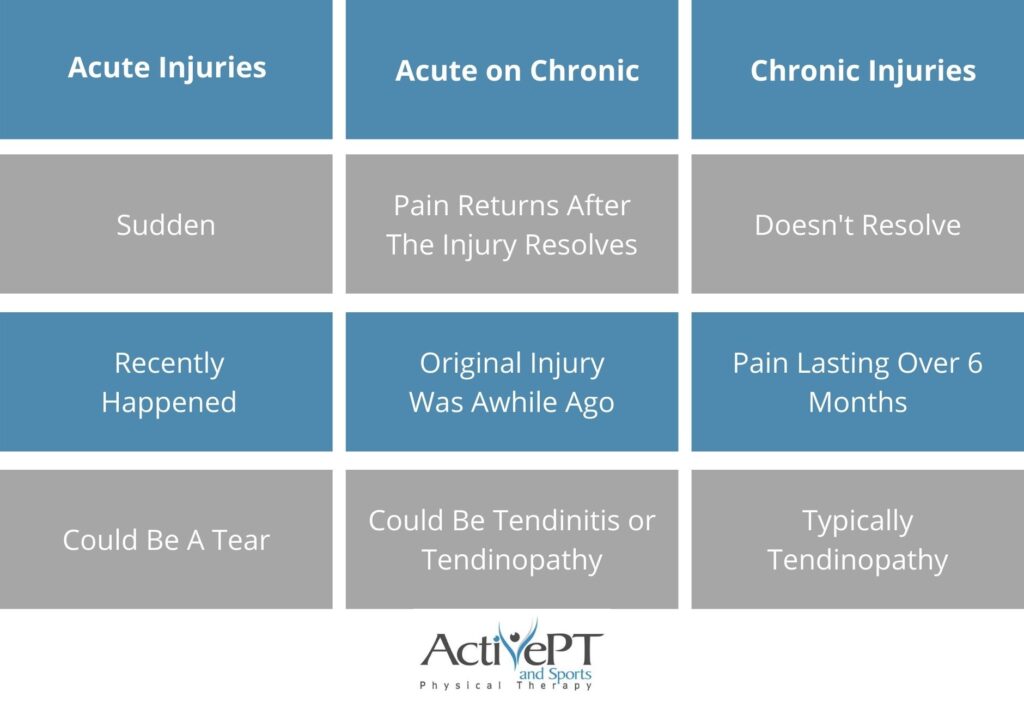
DID I TEAR MY ROTATOR CUFF?
This may sound strange, but rotator cuff tears are surprisingly common and not always bad. Over the years, we repetitively use these muscles and they gradually begin to wear thinner. Partial thickness tears are now thought to be a normal finding on MRI in those over 40 years old. We also know from current research that most athletes and non-athletes with partial thickness tears on MRI have no pain. So, this is great news!
Partial thickness tears are a normal part of the aging process and can be totally pain free. However, if you suffered an acute injury, can hardly lift your arm and are having severe pain at night, there is a chance you may have fully torn your rotator cuff. This is a different injury all together. Some full-thickness rotator cuff tears will remain functional afterward, but we always recommend a surgical consultation to learn your options. Our therapists can evaluate your shoulder for this type of injury in a matter of minutes and recommend a reputable shoulder surgeon for a consultation. We can even help arrange the appointment.
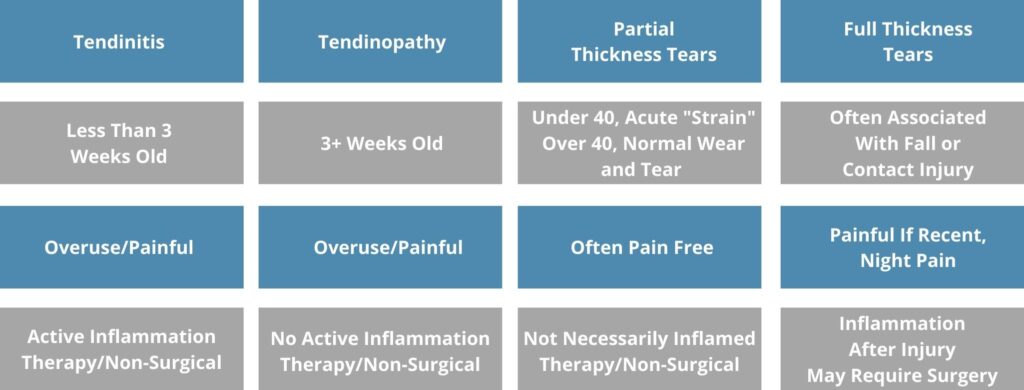
RECOVER FASTER & PREVENT INJURY WITH THE RIGHT SHOULDER PROGRAM
Prevention and early treatment are the keys to helping a shoulder injury resolve quickly. Many tactical training programs include strength and cardiovascular exercise, but may be missing the key muscles to shoulder pain prevention. Consider adding stabilization exercises to reduce the risk of shoulder pain.
Strengthening exercises for the rotator cuff are a key part of shoulder pain prevention. However, strengthening these muscles is really endurance training. The back of the rotator cuff (external rotators) are small muscles built for stability. They are not built for strength. When strengthening the external rotators, use no more than two pounds and perform high reps, for example 2-3 sets of 20 repetitions. Keep your posture perfect while performing rotator cuff strengthening. Rotator cuff exercises should not make your pain substantially worse or cause lasting pain for more than a couple hours after a workout. If they do, get screened by a physical therapist who specializes in shoulder pain.
Another key muscle group for shoulder injury prevention are the traps, specifically middle and lower trapezius. If you stand “at attention” you contracted your lower trapezius. This muscle lives at the bottom corner of your shoulder blade and helps squeeze your shoulder blades together and down. Strengthen these muscles with short rows that focus on squeezing your shoulder blades rather than pulling way back.
Here are a few examples of exercises for you to try:
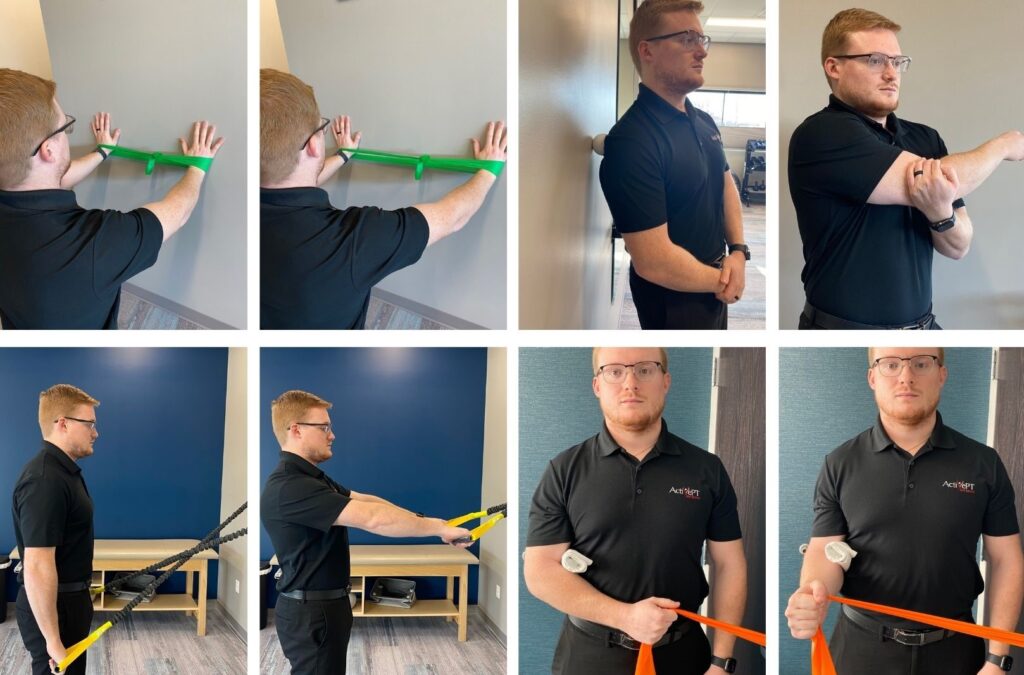
START TREATMENT EARLY
One key way to keep rotator cuff tendinitis from becoming chronic is to treat it immediately. Unfortunately, patients often describe only a mild soreness when this problem starts, making it easy to ignore. Over time, it gradually becomes more and more painful. Ice, avoiding painful motions and applying pressure to sore muscles can all help to relieve pain. When you address your rotator cuff pain in the early stages with physical therapy, only a minimal amount of care is often needed. Learning the best stretches, pain relief techniques and prevention exercises can help you for years to come.
Get your shoulder pain assessed today with a free 15-minute screening appointment. Learn how to reduce your pain and get your shoulder functioning better with the advice from a therapist that specializes in the treatment of tactical athletes.
Get your shoulder evaluated if:
- Pain does not resolve 3 days after an injury
- Shoulder motion or strength seems limited
- Pain gets worse over time
- Pain disturbs your sleep

Sam Fischer, DPT, CSCS
